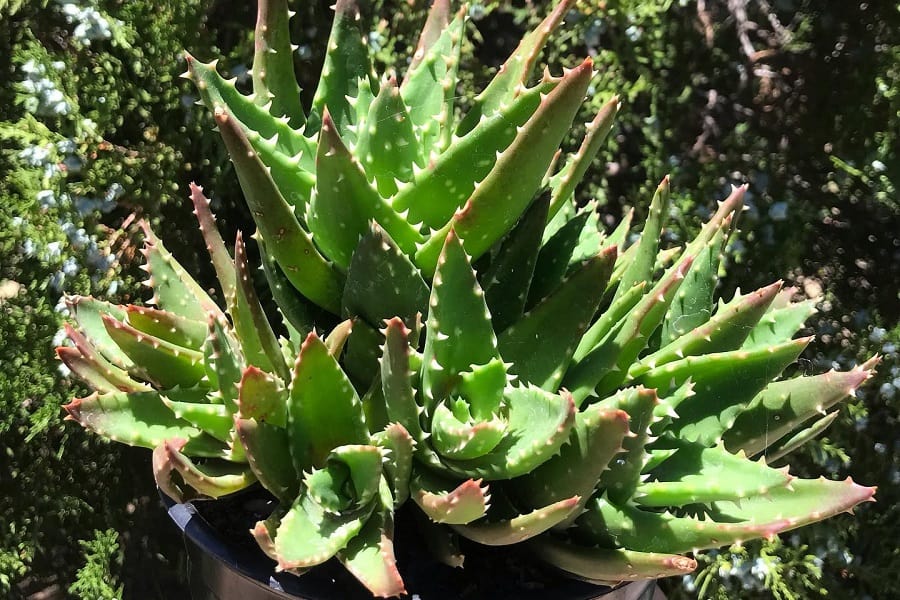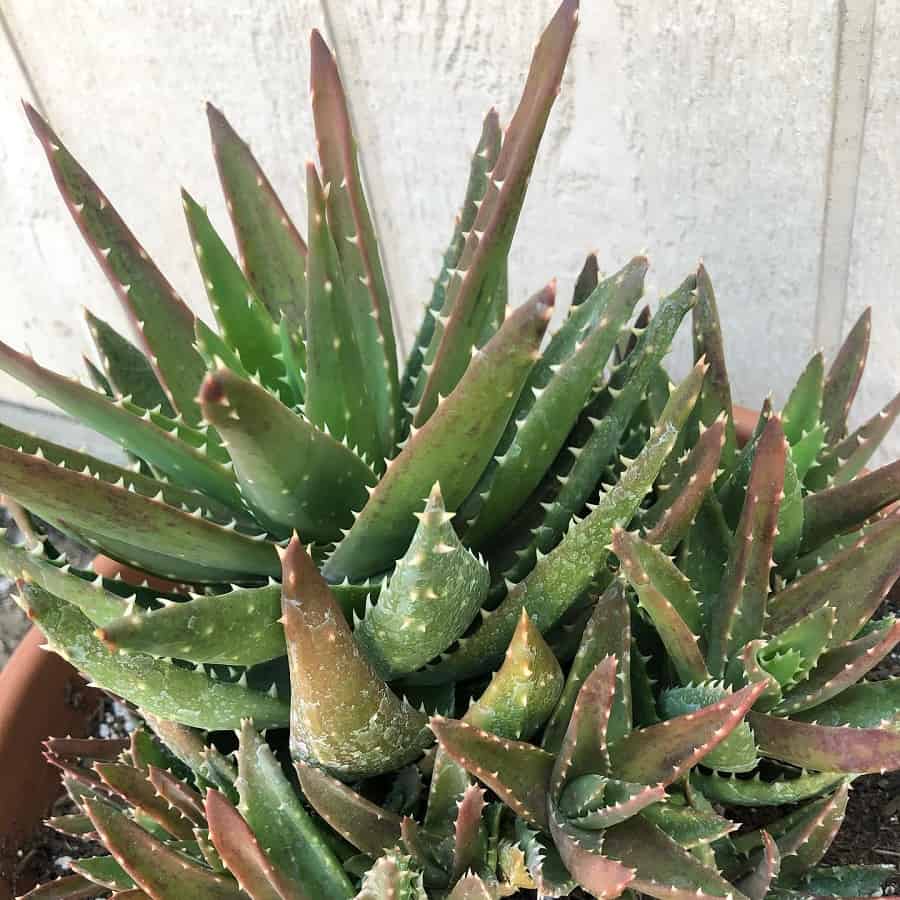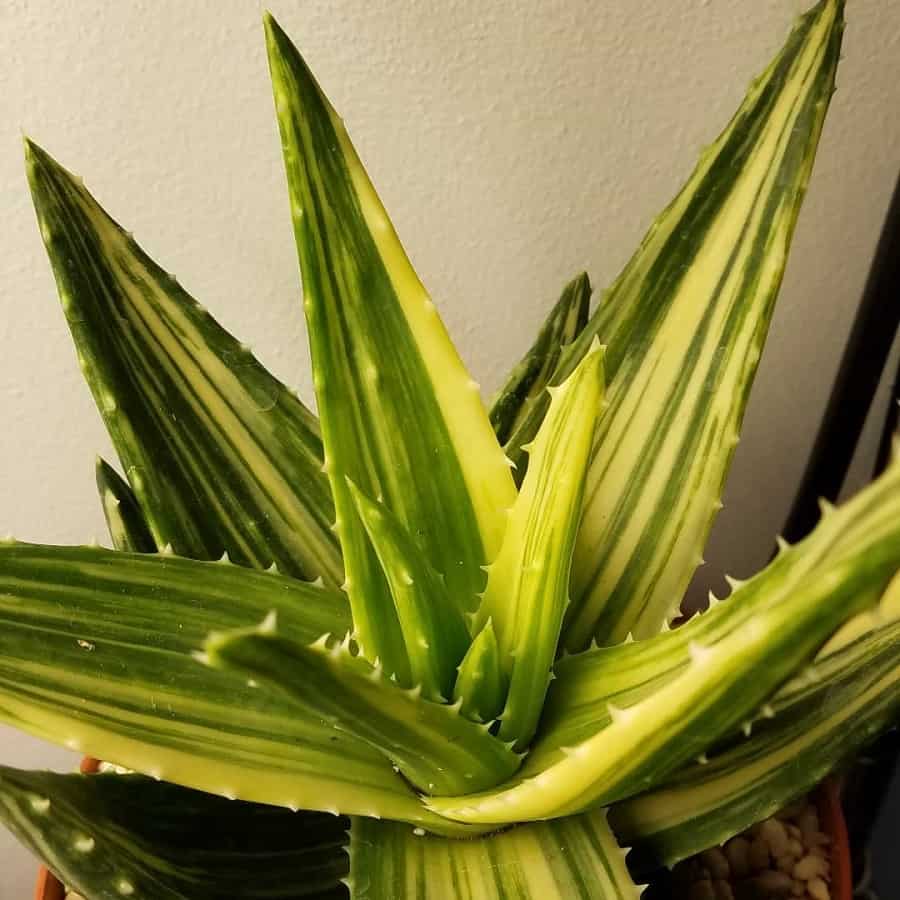Gold Tooth Aloe 101: Care and Propagation Simplified
Have you ever come across a plant that looks like it’s straight out of a fairy tale? Well, the Gold Tooth Aloe is exactly that! With its bright green leaves adorned with sharp, yellow-orange teeth, it’s a true showstopper. But the best part? It’s incredibly easy to care for, making it the perfect addition to any indoor or outdoor space.

Related Post:
40+ Interesting Types of Aloe Plants with Pictures
Contents
About the Gold Tooth Aloe Plant
Scientifically known as Aloe nobilis, this succulent hugs the ground with its leaves arranged in rosettes. The leaves themselves are large and eye-catching, but wait until you see the flowers! During the summer months, red blooms emerge, adding a pop of color to your garden or living space.
How to Care for Gold Tooth Aloe
Light
This plant thrives in bright sunlight but appreciates some shade during the hottest months to protect it from intense, direct sun and reflected heat. If you’re growing it indoors, consider using grow lights to provide the necessary brightness. The leaves will turn a beautiful red-orange hue when exposed to ideal lighting conditions.
Water
During the winter, your Gold Tooth Aloe will need regular watering, but in the warmer months, when it goes dormant, you can cut back. In summer, the plant prefers to stay on the drier side, so don’t overwater. The key is consistent, occasional watering – soak the soil thoroughly, but only when it’s completely dried out.

Soil
This succulent is adapted to drier climates, so it thrives in well-draining, porous soil. An organic cactus mix or sandy soil with large particles is perfect. Avoid soggy, wet soils, as they can lead to root rot.
Fertilizer
To give your Gold Tooth Aloe a boost, feed it with a succulent or cactus fertilizer during its growing season. Look for one high in potassium but low in nitrogen, and dilute it to half-strength. Apply it a couple of inches away from the plant’s base.
Climate
These plants love warmth and can tolerate minimum winter temperatures down to around 35°F (2°C), but they can’t handle freezing temperatures. They thrive outdoors in USDA Hardiness Zones 9b to 11 and enjoy 80-100% sunlight. In colder months, bring them indoors or provide protection.

Pests and Diseases
The Gold Tooth Aloe is generally a hardy and disease-resistant plant. However, overwatering can lead to fungal issues, so it’s essential to let the soil dry out between waterings. As for pests, your plant may occasionally encounter aphids, snails, slugs, or white scale. Fortunately, these problems can often be prevented by maintaining optimal growing conditions. If you do notice any unwanted visitors, treat your plant promptly to nip the issue in the bud.
Gold Tooth Aloe Propagation
Pups: One of the easiest ways to propagate this succulent is through its offsets, or pups.
- Gently remove the pup from the parent plant, making sure to keep the roots intact.
- Allow the pup to callus over for a few days in a shaded area.
- Fill a small pot with a well-draining soil mix.
- Plant the offset and water it whenever the soil dries out.
- Once the pup has grown a bit, you can repot or transplant it outdoors.
Seeds: If you prefer to start from scratch, you can also propagate your Gold Tooth Aloe from seeds.
- Sow the seeds in a pot filled with a suitable soil mix.
- Lightly water the soil and cover the pot with plastic wrap.
- Place the pot in a warm location with indirect sunlight.
- Within a month, you should see seedlings emerge. Remove the plastic wrap once they appear.
